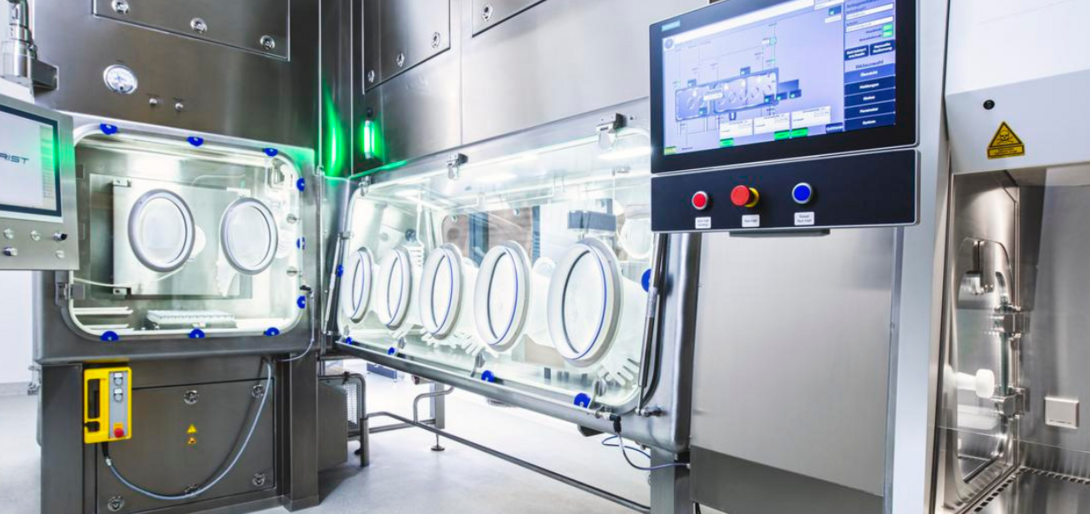Ergonomics on the isolator
Whether large or small, broad-shouldered or narrow – Waldner adapts its isolators to the respective operators. Customers can try out how this works using 1:1 wooden models at the Waldner Technikum - so that every hand movement fits.
Of course, the number one priority when it comes to an isolator is safety. Today, OEL (Occupational Exposure Limit) requirements that are far below 0.1 µg/m³, are no longer unusual.
Safety factor glove box
Anyone who has ever tried working sensibly while wearing gloves that are too big or too small will immediately understand that the ergonomics of an isolator is certainly a matter of safety. With an isolator, the height of the glove ports and the distance between them are also important. If they are too high, you have to stand on your tiptoes, but if they are too low, you have to bend your knees the whole time. If they are too far apart, it’s impossible to reach in properly with your arms stretched so far apart. And it is also impossible to work with your arms pressed together in front of your chest and not far enough apart. “It’s only when you can perform all of the work steps comfortably and reach everything in the isolator that you are working safely with respect to yourself and the product,” says Benjamin Sauterleute, responsible for sales at Waldner Process Systems, getting straight to the point.
Customisation
But how do you adapt the ergonomics of an isolator? If a customer orders an isolator from Waldner, the specialists of the division Process Systems build a mock-up, a 1:1 wooden model of the design of the isolator. It is usually three weeks after the order that the Waldner Technikum is ready. In an ideal situation, the operators who will later work with the isolator and know the process steps will come and test the model, running through the planned work processes. “If there are several people, then the largest and the smallest come, if possible,” says Sauterleute. Although the oval-shaped glove ports already offer a good amount of leeway, it is best if they are used at an optimal, preset height. It is possible to adjust not only the glove ports as required, but also the standard working height.
A roller conveyor for weights
In order to test the planned work steps in as realistic conditions as possible, the Waldner team have a few tricks up their sleeves. As a stand-in for the materials to be processed, depending on the required consistency, they use sand, flour or grains. A mock-up is also made of the instruments used, such as a set of scales or a screen. After all, it is important to see where the scales will stand later, and whether they need to be lowered, for example. “There is quite a difference between simply lifting a 1 kg weight and lifting it in an isolator,” explains the Waldner employee. This is why Waldner offers a lowered set of scales, so that it is easy to simply push the material onto the weighing platform, or it is only necessary to lift it at just the one level. Not only that, heavy materials can be easily transported over long distances along roller conveyors or a rail with castors. Another clever feature is that in order not to have to enter information cumbersomely on the outside panel and then put your hands back in the glove ports on the isolator during the weighing process, Waldner has integrated screens and control panel in the rear wall of the isolator. If this is not possible due to the nature of the material being processed, special switches in the isolator or external foot pedals make operation easy. The ergonomic set-up of the isolator is a key step, and usually takes 1-2 days. “Often, the mock-up is modified or rebuilt overnight,” says Benjamin Sauterleute and continues: „If a new process is involved, we also request an early mock-up, so that the customer can check in good time whether their process functions in the system with the planned dimensions.”
